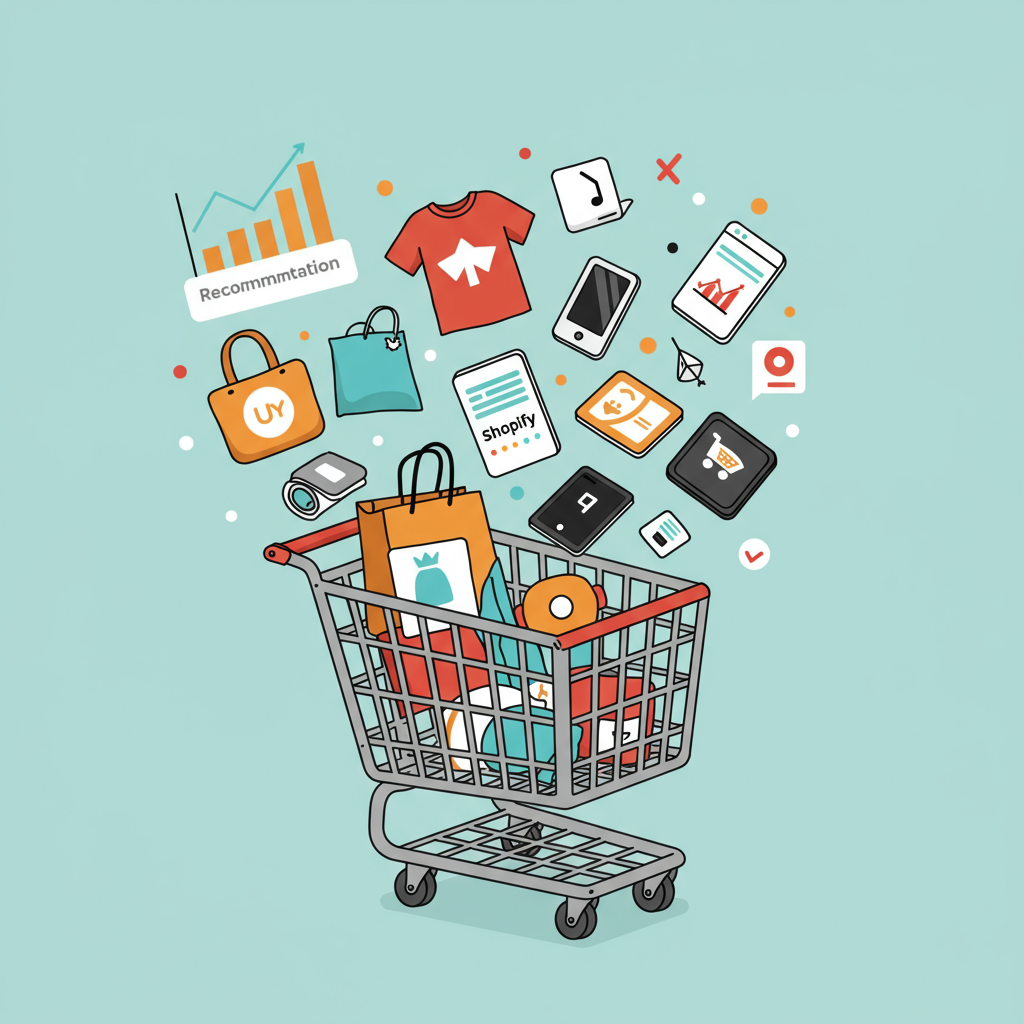Discover the strategies I’ve used to transform customer experiences and significantly increase average order value on my Shopify store.
As a Shopify merchant, I’ve seen firsthand the transformative power of personalization. It’s not just a buzzword; it’s a dynamic sales engine that can revolutionize how customers interact with your store and, ultimately, how much they spend.
In today’s incredibly crowded e-commerce landscape, generic shopping experiences simply don’t cut it anymore. Customers expect relevance, and they appreciate when a store understands their preferences, even implicitly.
My aim with this comprehensive guide is to share my personal journey and the actionable strategies I’ve employed to harness personalized product recommendations on my own Shopify store. I believe these insights can help you achieve similar success.
Many merchants initially think of recommendations as just the classic ‘customers who bought X also bought Y’ feature. While incredibly valuable, true personalization goes much, much deeper than that.
It all starts with understanding your customer. This means diligently collecting and analyzing various forms of data – from their browsing history and search queries to their past purchase patterns and even the current contents of their shopping cart.
I’ve found success by implementing several distinct types of recommendation strategies. There’s indeed the collaborative filtering model, which is the foundation for ‘customers also bought’ or ‘customers also viewed’ suggestions.
Then there’s content-based filtering, which is fantastic for suggesting items that are similar in attributes to what a customer has already viewed or purchased, ensuring high relevance.
The ‘frequently bought together’ or bundling recommendation is a personal favorite for me. It’s incredibly effective for increasing average order value (AOV) by prompting customers to add complementary products to their cart.
Don’t overlook the power of ‘new arrivals you might like’ for returning customers, or leveraging social proof with ‘top sellers’ or ‘trending products’ to guide new visitors.
Shopify does offer some basic ‘related products’ functionality built-in, which can serve as a decent starting point for very small stores or those just dipping their toes into recommendations.
However, for truly dynamic, intelligent, and scalable personalization, I quickly realized the limitations of Shopify’s native features. They often lack the deep learning capabilities and customization options needed for advanced strategies.
This is precisely where the Shopify App Store becomes your most invaluable ally. There’s a vast and sophisticated ecosystem of apps specifically designed to elevate your recommendation game far beyond the basics.
I’ve extensively explored and utilized AI-powered recommendation engines. These apps leverage machine learning algorithms to analyze vast amounts of data and predict with remarkable accuracy what a customer is most likely to buy next.
Dedicated upsell and cross-sell apps are also absolutely crucial. They provide the tools to strategically prompt customers to add more items before or during the checkout process, capturing those impulse buys.
And please, do not underestimate the power of post-purchase upsells. Offering relevant items on the order confirmation page or within follow-up email sequences can generate significant additional revenue.
When I’m selecting a recommendation app, I always look for robust features such as multiple recommendation types, A/B testing capabilities, and detailed analytics dashboards to track performance.
Ease of integration with my existing Shopify theme and responsive, knowledgeable customer support are also non-negotiable criteria for me. A good app should be a seamless extension of your store.
Where you strategically place these recommendations on your store is just as important as the quality and relevance of what you recommend. Placement can significantly impact click-through and conversion rates.
I always ensure recommendations are prominently displayed on product pages, typically below the description, above the reviews, or strategically near the ‘add to cart’ button to encourage immediate action.
The cart page is a prime piece of real estate for last-minute impulse buys or for suggesting essential complementary items that might have been overlooked during initial browsing.
Personalized sections on the homepage, such as ‘For You’ or ‘Recommended for [Customer Name]’, or within collection pages, can guide customers to relevant products from the very moment they land on your store.
Extending personalization to your email marketing campaigns, particularly for abandoned cart reminders or post-purchase follow-ups, has yielded some of my most significant results. It keeps the customer journey cohesive.
I cannot stress enough the importance of rigorous A/B testing. Continuously test different recommendation algorithms, various placements, and even the specific wording of your calls to action to find what resonates best with your audience.
Always, always monitor your key performance indicators (KPIs). Track metrics like average order value (AOV), overall conversion rate, and, crucially, the click-through rate on your recommendation widgets.
This isn’t a ‘set-it-and-forget-it’ strategy. Personalized recommendations require continuous optimization based on the data you collect. Iteration is vital for sustained growth and maximizing their impact.
One challenge I’ve encountered is the ‘cold start’ problem, which applies to both brand new products with no sales history and brand new customers with no browsing data.
For new products, I might initially rely on ‘top sellers’ recommendations or manually create associations. For new customers, broader category recommendations or popular items can serve as a good starting point.
Always be mindful of data privacy regulations and customer trust. Transparency with your customers about how their data is used to enhance their shopping experience builds loyalty and confidence.
Implementing these personalized recommendation tactics has truly transformed my Shopify store, leading to significantly higher customer engagement, increased average order values, and, most importantly, a substantial boost in overall revenue.
The future of e-commerce is undeniably personalized. Staying ahead of the curve means embracing these intelligent technologies and continuously refining your approach to meet evolving customer expectations.
I wholeheartedly encourage you to explore and implement these strategies for your own Shopify store. The positive impact on your sales and customer satisfaction can be truly remarkable.
What do you think about this article? I’d love to hear your thoughts or any personalized recommendation strategies you’ve found particularly successful on your own Shopify store.






